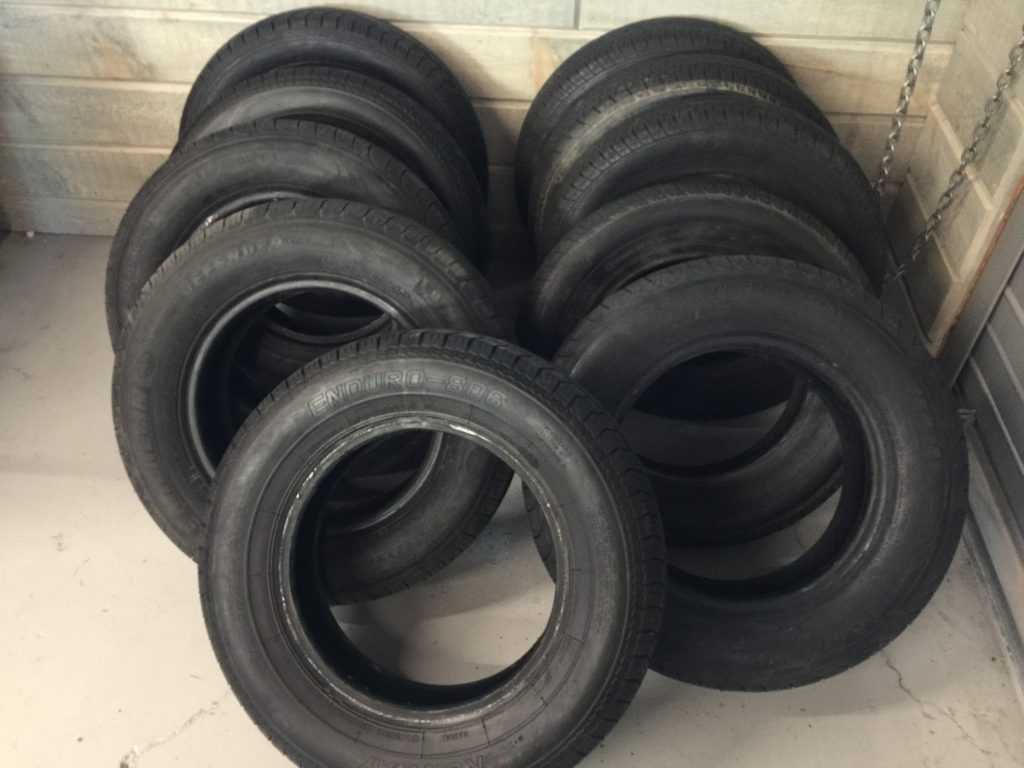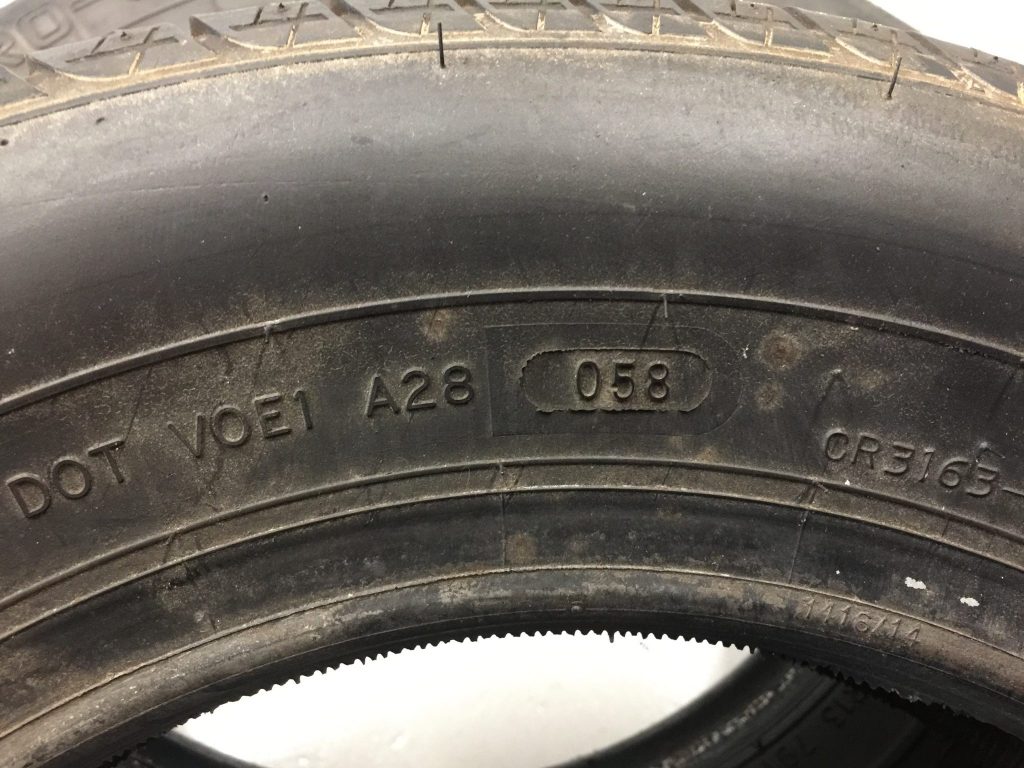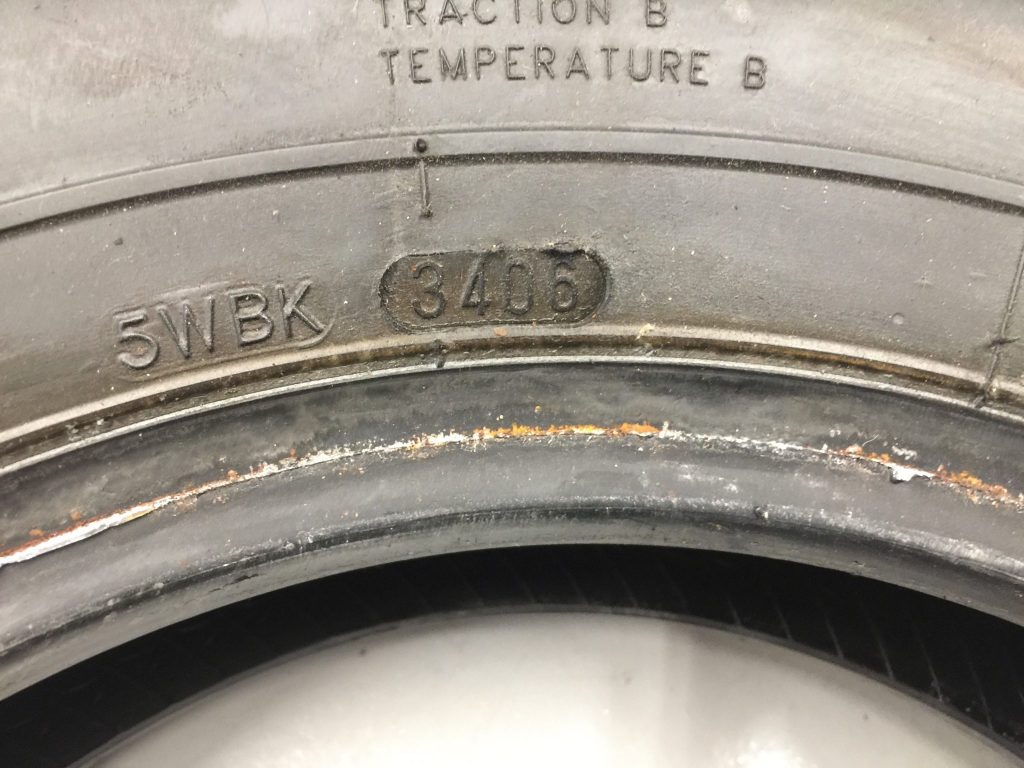
Everyone cheats on the date.
And it makes sense, most classics never even begin to wear out the tread. We just don’t drive them enough.
Here’s how you tell just how old your tires are:

The tire above has a three digit date stamp. This means it was built before 2000. It would have made in the 5th week of 1998, or 88? There is no way of knowing (hence the change to four digits after 2000). All tires after 2000 have a four digit date stamp like the one below. That one was made in the 34th week of 2006, which means it’s 12 years old.

In actuality, both of these tires are in our discard pile that you see above. Even the 12 year-old tire is past its prime.
I can tell right away from the ride quality, the date stamp merely confirms what my butt already knows. Any tire more than about 8 years old has started to harden, and as such, it yields less and provides a firmer ride. Sprites need all the suspension they can get, and the tire is vital for a supple ride. Older tires also skitter along the tops of the peaks of any asphalt surface, instead of hooking up with the roadway. As such, an old tire doesn’t grip as well and certainly can’t brake as well.
I used to think this was all propaganda from tire sellers. But I have driven enough Sprites now over the same local roads to be able to feel the difference. Old tires don’t stick. Sprite suspension is so low tech that the tire is even more vital for a good ride and the safest drive. While I hate to put more tires into the waste stream, safety is more important, and if your British car stops 50 or just 10 feet sooner because the rubber is fresh, that might just save your Bugeye nose from some unsightly scars!
Please proceed to your car and check the tire date stamps today. 13 inch tires are cheap, about 1/4 of the price of modern tires for most SUVs.
Shameless plug: we sell the tire we use on all our restorations, you can find it by clicking here.











